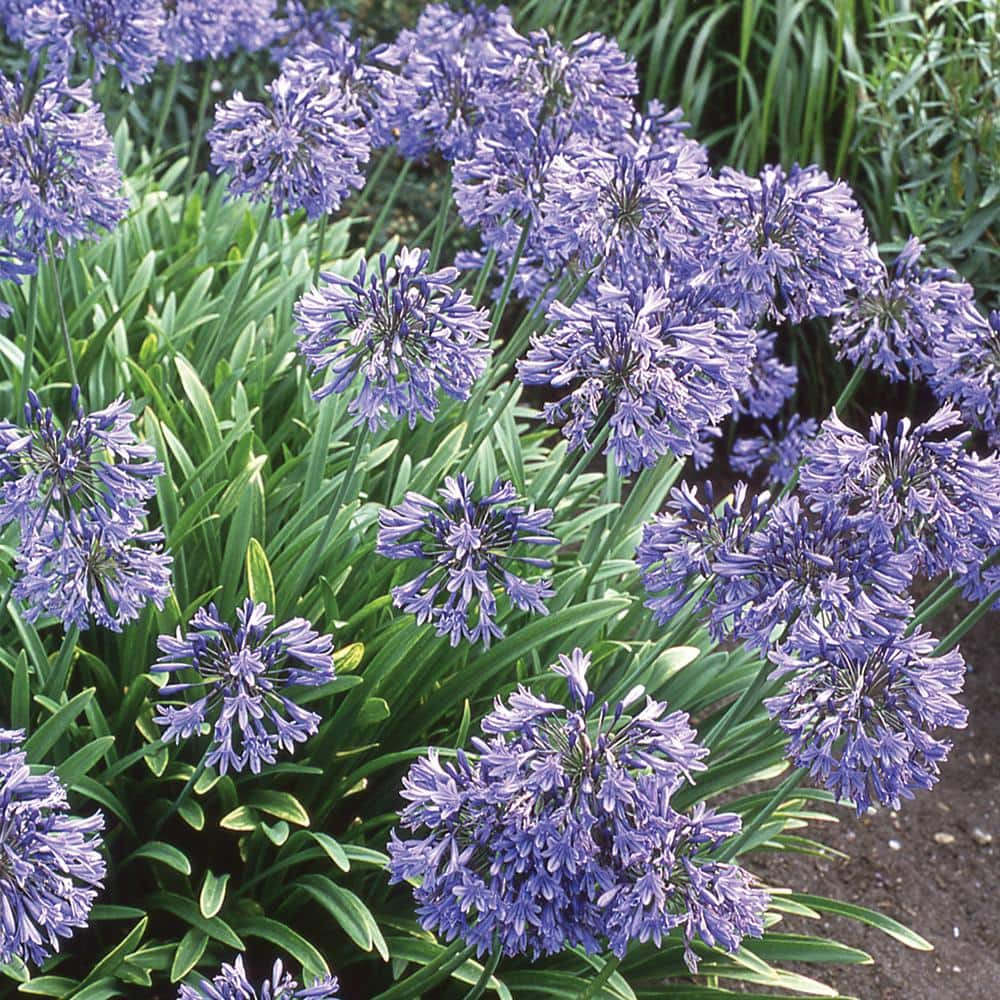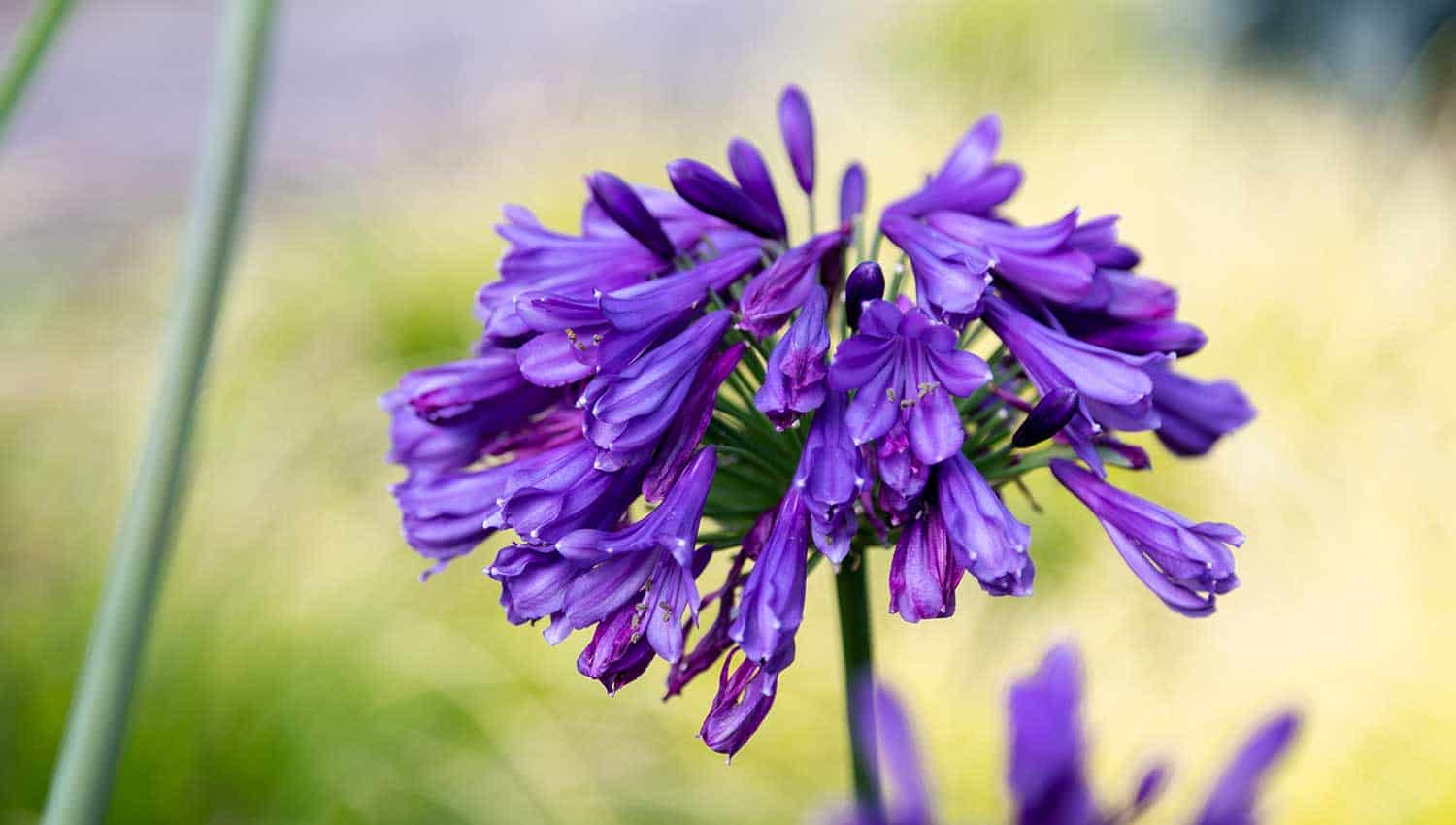Growing Agapanthus: A Complete Overview to Beautiful Blooms
Growing Agapanthus: A Complete Overview to Beautiful Blooms
Blog Article
Unleashing the Secret to Successful Agapanthus Growing: Tips and Tricks for a Flourishing Yard
In the realm of horticulture, cultivating agapanthus successfully calls for a calculated method that encompasses various elements of plant treatment. With cautious interest to information, one can unlock the secrets to nurturing these spectacular flowers, leading to a garden that prospers with beauty and vibrancy. By recognizing the nuances of agapanthus growing, one can create an atmosphere where these plants thrive and flower abundantly. In the complying with conversation, we will certainly discover important suggestions and methods that will certainly direct you in the direction of a growing agapanthus garden, offering understandings into best methods, soil problems, watering methods, and a lot more.
Planting Agapanthus: Finest Practices
When planting Agapanthus, proper dirt prep work is important for guaranteeing successful development and advancement of these gorgeous blossoms. Agapanthus, typically recognized as Lily of the Nile or African lily, thrives in well-draining dirt with a slightly acidic to neutral pH level - Agapanthus. Prior to growing, it is essential to change hefty clay dirts with raw material such as garden compost or peat moss to enhance drainage and offer important nutrients for the plants
To plant Agapanthus, select a place that gets full sunshine to partial shade, as this will promote healthy growth and bountiful blooming. Dig a hole two times the diameter of the plant's root round and place the Agapanthus at the same depth it was formerly growing. Delicately backfill the hole with soil, weighing down securely to remove any air pockets around the origins.
Water the freshly planted Agapanthus thoroughly and proceed to keep the soil equally wet, specifically during the plant's active expanding season. Agapanthus. Using a well balanced fertilizer once a month can even more sustain the plant's growth and flowering. By adhering to these ideal methods for planting Agapanthus, you can develop a sensational display of these fascinating flowers in your yard
Perfect Dirt Conditions for Agapanthus
For optimum growth and flowering success of Agapanthus plants, ensuring the dirt conditions are suitable is important. Agapanthus likes soil that is abundant in nutrients, so incorporating a balanced plant food throughout the expanding season can promote healthy development and lively blossoms.

Watering and Feeding Tips
To make certain healthy development and vivid blossoms, proper watering and feeding strategies are important for successful Agapanthus cultivation. Agapanthus plants take advantage of routine watering, particularly throughout the growing season. It is suggested to water deeply when a week, guaranteeing the soil is damp however not saturated. During heat or in pots, more frequent watering may be needed to stop the soil from drying out entirely.
When it pertains to fertilizing Agapanthus, a balanced plant food with equivalent components nitrogen, phosphorus, and potassium can be used in the spring to promote healthy growth and flowering. Slow-release plant foods are perfect for offering nutrients slowly over a prolonged duration. Stay clear of over-fertilizing, as this can result in excessive vegetation growth at the cost of flowers.
Additionally, incorporating organic matter like compost right into the dirt can enhance nutrient degrees and improve soil framework, aiding in the overall wellness of the Agapanthus plants. By following these watering and feeding ideas, gardeners can ensure their Agapanthus plants flourish and produce magnificent displays of flowers.
Pruning and Deadheading Techniques
Proper pruning and deadheading strategies play a vital role in keeping the health and wellness and visual appeals of Agapanthus plants, complementing the crucial techniques of watering and fertilizing for successful cultivation. Trimming Agapanthus involves removing spent blossom heads, dead or yellowing leaves, and overall shaping of the plant to advertise far better growth. Deadheading, the procedure of getting rid of faded flowers, not just boosts the plant's appearance yet additionally urges more flowering.
When deadheading Agapanthus, it is suggested to trim off the blossom stem at the base making use of sharp, tidy shears. This process reroutes the plant's power from seed production back into root and foliage growth, advertising a healthier and more robust plant. Normal deadheading can prolong the growing duration of Agapanthus and protect against self-seeding, which can result in congestion.
In terms of pruning, Agapanthus usually take advantage of a light trim after flowering to clean up the plant and motivate fresh development. Cutting down the blog spent blossom stems and getting rid of any kind of damaged or dead vegetation helps maintain the plant's vitality and overall look. Nevertheless, it is vital to avoid reducing into the crown of the plant, as this can damage its health.

Protecting Agapanthus From Vermins and Diseases
Implementing efficient pest and disease monitoring methods is vital click here to read to securing the health and vigor of Agapanthus plants in growing. Agapanthus are usually durable plants, yet they can still fall victim to various pests and conditions if not effectively taken care of. One typical pest that impacts Agapanthus is the Agapanthus borer, a caterpillar that tunnels into the plant, creating damages to the blossoms and fallen leaves. To protect against invasions, normal assessment of the plants is essential. If borers are detected, they can be manually gotten rid of, or insecticidal soap can be made use of as a control measure.
Along with parasites, Agapanthus are susceptible to conditions such as root rot and fungal leaf areas. These concerns can frequently be avoided by making certain appropriate water drainage and staying clear of overwatering. If indications of disease appear, impacted parts of the plant ought to be quickly eliminated to prevent additional spread. Fungicides might likewise be used as a treatment procedure, complying with the producer's directions carefully. By remaining cautious and addressing pest and disease problems without delay, garden enthusiasts can help their Agapanthus flourish and prosper.

Conclusion
Finally, successful cultivation of agapanthus needs correct growing techniques, perfect dirt his response problems, adequate watering and feeding, routine pruning and deadheading, and security from parasites and conditions. By complying with these pointers and methods, garden enthusiasts can ensure a flourishing garden filled with attractive agapanthus blooms. Agapanthus. Keep in mind to maintain regular care and focus to detail to advertise the wellness and durability of these spectacular plants
When growing Agapanthus, proper dirt preparation is important for guaranteeing effective growth and development of these attractive flowers.Water the recently planted Agapanthus completely and proceed to maintain the soil evenly wet, especially during the plant's energetic growing period.For optimal growth and growing success of Agapanthus plants, making sure the dirt conditions are optimal is vital. When growing or transplanting Agapanthus, make sure the dirt is well-prepared to provide the necessary structure for the plants to establish themselves successfully. One usual parasite that influences Agapanthus is the Agapanthus borer, a caterpillar that passages into the plant, creating damage to the blossoms and fallen leaves.
Report this page